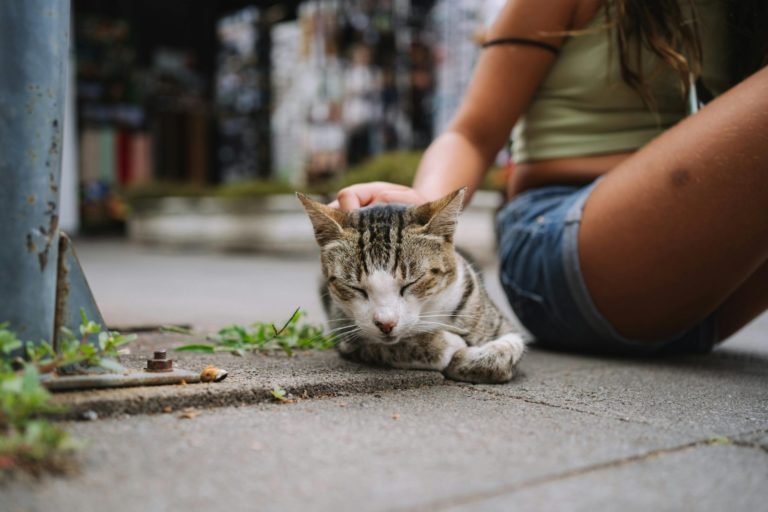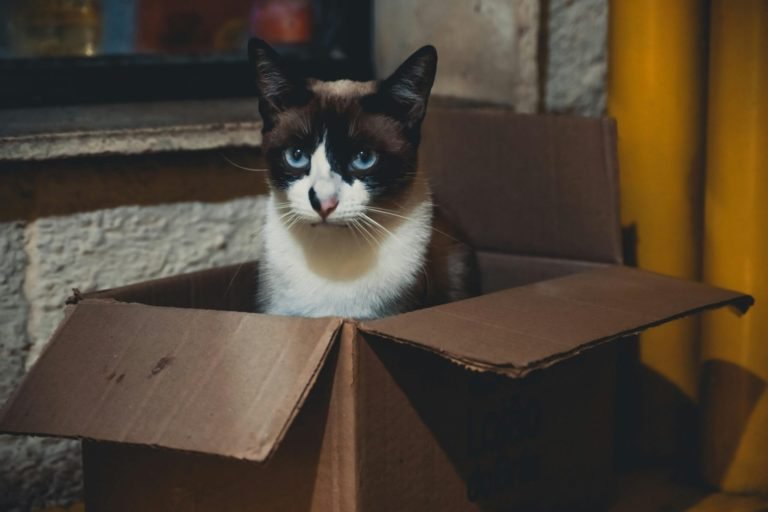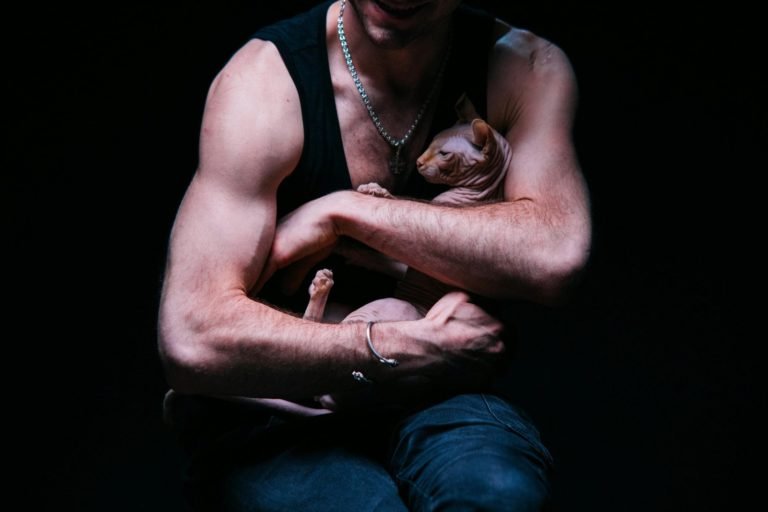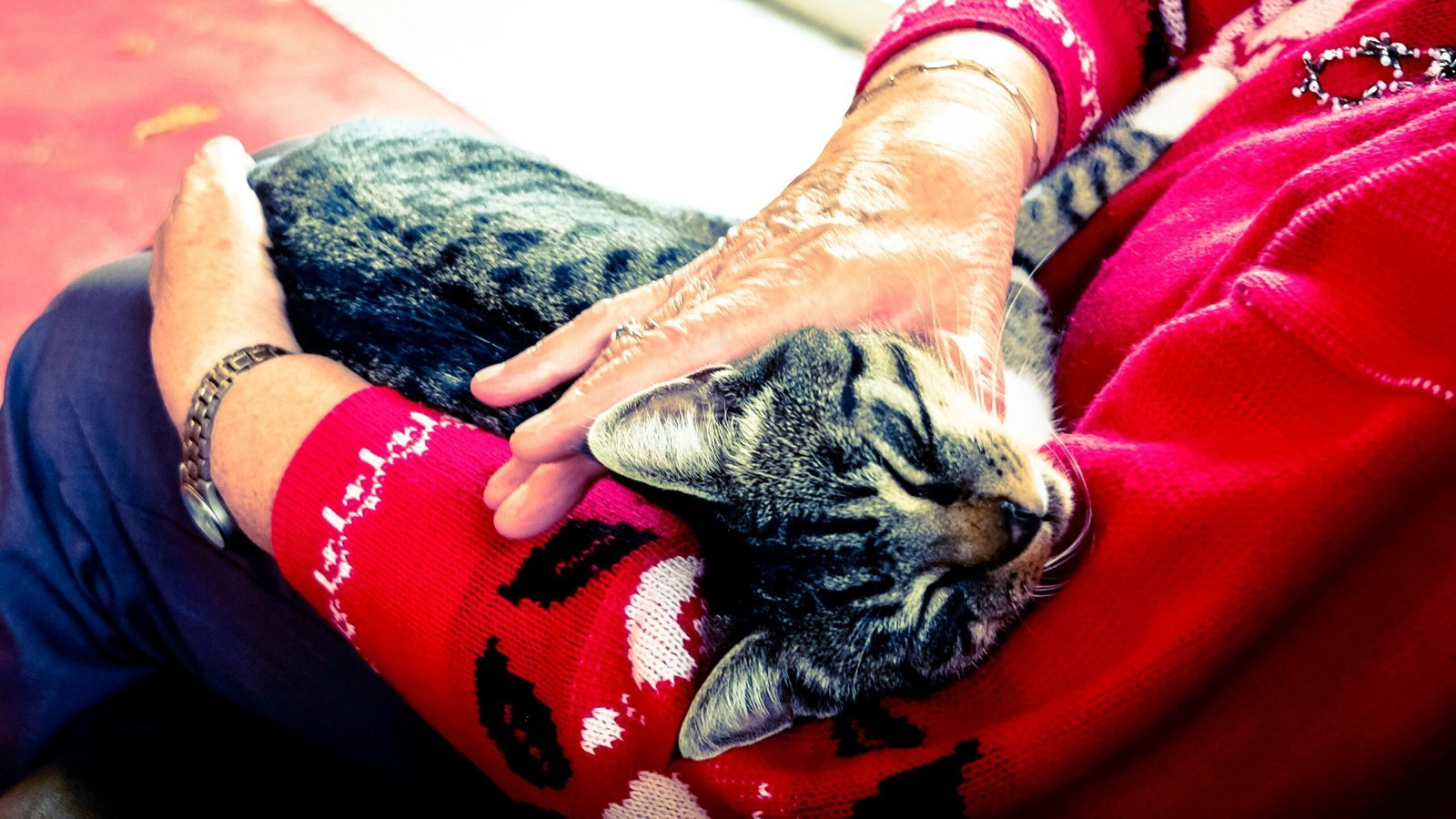
Hey there, cat lovers! Today, we’re going to talk about something that might sound a bit scary at first – hyperthyroidism in cats.
But don’t worry! We’re going to break it down into easy-to-understand bits. By the end of this post, you’ll be a pro at spotting the signs of hyperthyroidism in cats and knowing what to do about it. So, let’s dive in!
You know how much we love our feline friends, right? They’re part of our families, and we want to keep them healthy and happy. That’s why it’s important to learn about common health issues that can affect them, like hyperthyroidism. It might sound like a big, complicated word, but we’re going to make it super easy to understand.
What is Hyperthyroidism in Cats?
First things first, what exactly is hyperthyroidism in cats?
Well, it’s a pretty common problem that older cats can get. It happens when a cat’s thyroid gland goes into overdrive and makes too much of a hormone called thyroid hormone.
Let’s break that down a bit more. Imagine your cat’s body is like a car. The function of your thyroid gland is similar to that of the gas pedal of your body.
When everything’s working right, it gives just enough “gas” to keep your cat’s body running at the right speed. But with hyperthyroidism, it’s like someone’s pressing that gas pedal too hard. Your cat’s body starts running too fast, and that can cause all sorts of problems.
What’s the Thyroid Gland?
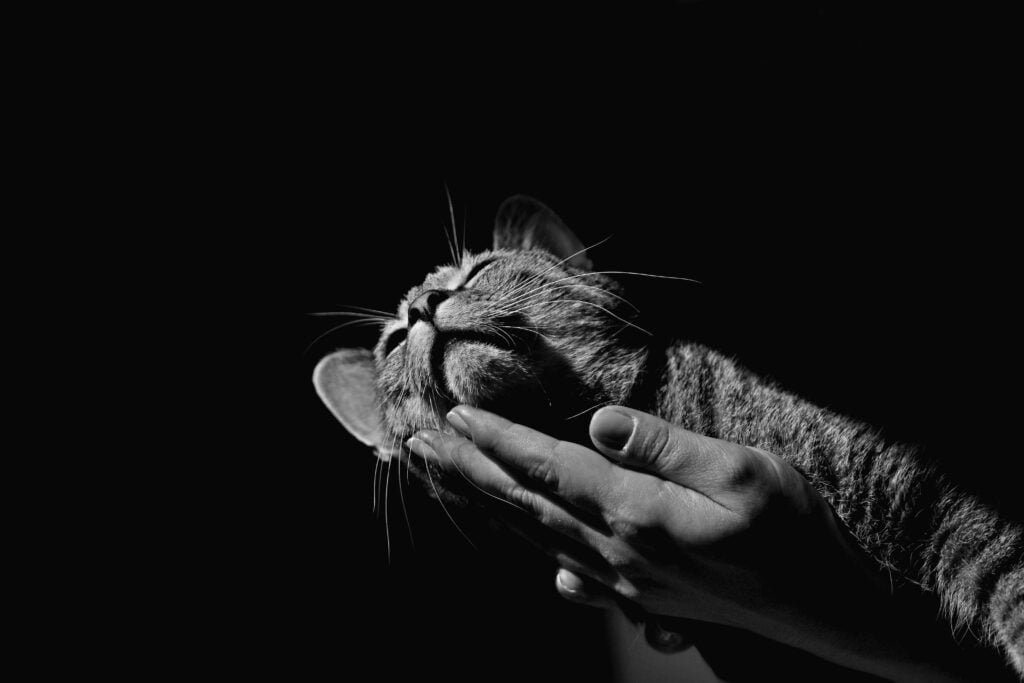
Now, you might be wondering, “What’s the thyroid gland?” Good question! It’s a small gland in your cat’s neck that makes hormones. These hormones help control how fast your cat’s body works. When everything’s normal, it keeps things running smoothly. But when there’s too much hormone, things can get a bit crazy!
The thyroid gland is actually made up of two small lobes, one on each side of your cat’s windpipe. Each lobe is about the size of a grain of rice. Pretty small, right? But don’t let the size fool you – these tiny glands play a big role in your cat’s health.
The thyroid gland produces hormones that affect almost every part of your cat’s body. These hormones help control things like:
1. How fast your cat’s heart beats
2. How quickly food moves through their digestive system
3. How much energy your cat has
4. How fast your cat’s fur grows
5. Even how clearly your cat can think!
When the thyroid is working normally, it produces just the right amount of hormones to keep all these processes running smoothly. But in cats with hyperthyroidism, the thyroid goes into overdrive. It’s like a factory that’s working overtime, producing way more hormones than your cat’s body needs.
Some Facts About Cat Thyroids
Let’s lighten things up with some fun facts about cat thyroids:
1. Cats have two thyroid glands, one on each side of their windpipe.
2. The word “thyroid” comes from Greek words meaning “shield-shaped.”
3. Cats can get hypothyroidism (not enough thyroid hormone), too, but it’s much rarer than hyperthyroidism.
4. The thyroid gland is tiny – about the size of a grain of rice in healthy cats!
5. Hyperthyroidism in cats wasn’t recognized as a disease until the 1970s.
6. Siamese and Himalayan cats seem to have a lower risk of hyperthyroidism than other breeds.
7. The thyroid gland helps control your cat’s metabolism, body temperature, and even hair growth!
Why Does Hyperthyroidism in Cats Happen?

So, why do some cats get hyperthyroidism? Well, there are a few reasons:
1. Age: Older cats are more likely to get it. It’s rare in cats under 10 years old. As cats get older, their bodies change, and sometimes, these changes can affect how their thyroid works. It’s kind of like how humans are more likely to have certain health issues as they get older.
2. Diet: Some studies suggest that certain cat foods might play a role. For example, some researchers think that cats who eat a lot of canned food, especially fish-flavored varieties, might be at higher risk. But don’t panic and throw out all your cat’s food just yet! We’re still learning about this, and more research is needed.
3. Genetics: Some cats might just be more likely to get it because of their genes. It’s like how some humans are more likely to get certain diseases because of their family history. We don’t fully understand the genetic factors yet, but scientists are working on it.
4. Environmental factors: Things like chemicals in the environment might contribute. Some studies have looked at things like flame retardants in furniture and carpets or chemicals used in cat litter. These chemicals might affect the thyroid gland over time.
But here’s the thing – sometimes we just don’t know why it happens. It can be a bit of a mystery!
Often, it’s probably a combination of several factors. Your cat might be older, have a genetic predisposition, and be exposed to certain environmental factors all at the same time.
It’s important to remember that if your cat gets hyperthyroidism, it’s not your fault. It’s not because you did something wrong or because you’re a bad cat parent. It’s a common condition that many cats get as they age, regardless of how well they’re cared for.
Signs of Hyperthyroidism in Cats
Now, let’s talk a bit about how you can spot hyperthyroidism in cats. Here are some signs to watch out for:
1. Weight loss: This is a big one. If your cat is eating a lot but still losing weight, it could be hyperthyroidism.
2. Increased appetite: Your cat might seem super hungry all the time.
3. Restlessness: Your usually calm kitty might suddenly seem very active or anxious.
4. Vomiting or diarrhea: Tummy troubles can be a sign.
5. Increased thirst and peeing: You might notice you’re filling the water bowl more often.
6. Messy coat: Your cat’s fur might look unkempt or greasy.
7. Fast heartbeat: This one’s hard to spot at home, but a vet can check for it.
8. Breathing fast: Your cat might seem out of breath more easily.
Remember, every cat is different. Your cat might show all of these signs or just a few. If you notice any of these, it’s a good idea to chat with your vet.
Diagnosing Hyperthyroidism in Cats
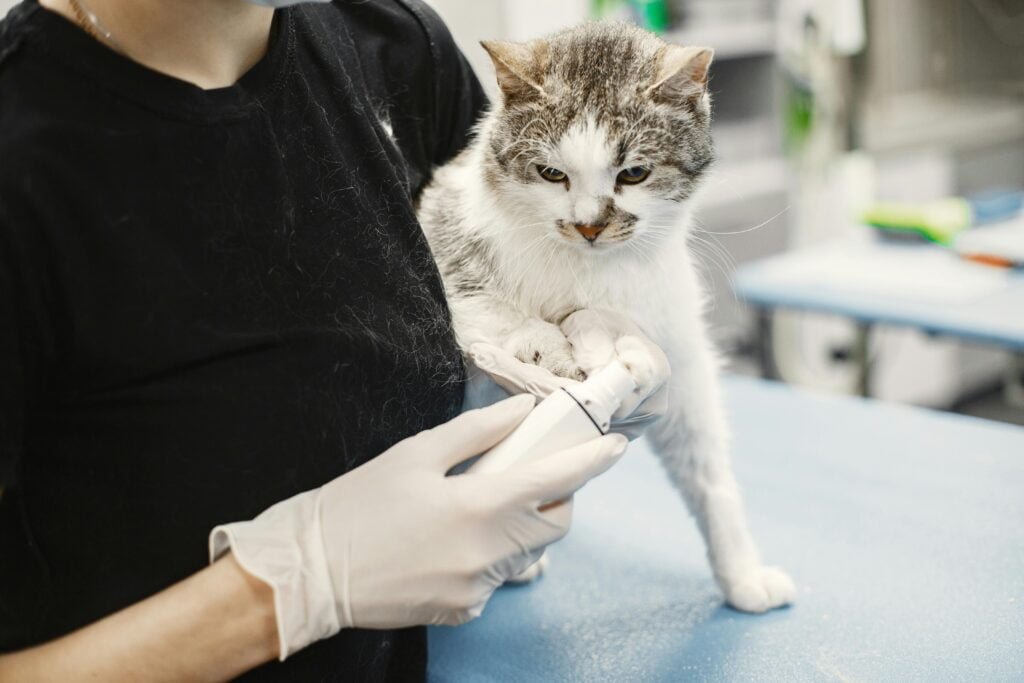
If you think your cat might have hyperthyroidism, the next step is a trip to the vet. Here’s what you can expect:
1. Physical exam: The vet will check your cat over, feeling for an enlarged thyroid gland.
2. Blood tests: These can show if your cat’s thyroid hormone levels are too high.
3. Other tests: Sometimes, the vet might want to do more tests to rule out other problems.
Don’t worry – these tests aren’t painful for your cat. They’re just to help figure out what’s going on.
Treating Hyperthyroidism in Cats
Good news! There are several options to treat hyperthyroidism in cats. Let’s look at the options:
1. Medication: Some pills can help control thyroid hormone levels. These pills are the first treatment vets try.
2. Special diet: Some cats can be treated with a special low-iodine diet.
3. Surgery: Sometimes, vets might recommend removing the thyroid gland.
4. Radioactive iodine treatment: This sounds scary, but it’s actually very safe and effective.
Your vet will help you make decisions about which treatment is best for your cat. It depends on things like how sick your cat is, how old they are, and what other health problems they might have.
Living with a Cat with Hyperthyroidism
If your cat has hyperthyroidism, don’t worry! With proper care, they can still live a happy, healthy life. Here are some tips:
1. Follow your vet’s instructions: This is super important. Give medications as directed and go to all follow-up appointments.
2. Watch for side effects: If you’re using medication, keep an eye out for any new symptoms.
3. Monitor your cat’s weight: Regular weigh-ins can help you know if the treatment is working.
4. Provide a calm environment: Cats with hyperthyroidism can be a bit anxious, so a quiet, stress-free home helps.
5. Be patient: Treatment can take time to work. Don’t get discouraged!
Hyperthyroidism in Cats: A Day in the Life

Ever wondered what it’s like for a cat with hyperthyroidism? Let’s imagine a day in the life:
Morning: Fluffy wakes up earlier than usual, feeling hungry and restless. She meows loudly for breakfast, eats quickly, and then zooms around the house.
Midday: After a busy morning, Fluffy needs a long drink. She visits her water bowl more often than she used to.
Afternoon: Despite all the food and activity, Fluffy’s owner notices she feels skinnier when petted. Her fur looks a bit messy, too.
Evening: Fluffy’s still full of energy when her family is winding down. She might have some tummy troubles, too.
Night: While everyone else is sleeping, Fluffy might be up and about, still feeling restless.
Of course, every cat is different. Your cat might not act exactly like this. But if you notice changes in your cat’s behavior or appearance, it’s always worth checking with your vet.
Caring for a Cat with Hyperthyroidism: Tips and Tricks
If your furry friend has been diagnosed with hyperthyroidism, here are some tips to make life easier for both of you:
1. Stick to a routine: Cats love routine, and it can help reduce stress.
2. Make mealtimes special: If your cat’s on medication, try hiding pills in a tasty treat.
3. Provide comfy spots: Your cat might get warm easily, so make sure they have cool places to rest.
4. Keep the litter box clean: Your cat might need to use it more often.
5. Brush regularly: This can help if your cat’s coat is looking messy.
6. Stay positive: Your attitude can affect your cat’s mood, so try to stay upbeat!
Preventing Hyperthyroidism in Cats

Now, you might be wondering if there’s any way to prevent hyperthyroidism in cats. Unfortunately, there’s no surefire way to prevent it. But there are some things you can do that might help:
1. Regular check-ups: Taking your cat to the vet regularly can help catch problems early.
2. Healthy diet: Make sure to feed your cat a balanced, high-quality diet.
3. Avoid certain chemicals: Some household chemicals might increase the risk, so use natural cleaning products when possible.
4. Stay informed: Keep up with the developments and latest research on cat health.
Remember, even if you do everything right, your cat might still develop hyperthyroidism. It’s not your fault if it happens!
Myths About Hyperthyroidism in Cats
There are some myths out there about hyperthyroidism in cats. Let’s clear them up:
Myth 1: Only old cats get hyperthyroidism.
Truth: While it’s more common in older cats, younger cats can get it too.
Myth 2: Cats with hyperthyroidism always lose weight.
Truth: Most do, but some cats maintain or even gain weight.
Myth 3: Hyperthyroidism in cats is always fatal.
Truth: With proper treatment, many cats live long, happy lives with this condition.
Myth 4: You can’t treat hyperthyroidism in cats at home.
Truth: While you need a vet’s help, many treatments can be done at home.
Myth 5: Cats with hyperthyroidism can’t eat regular cat food.
Truth: Unless your vet recommends a special diet, most cats can eat their normal food.
When to Worry: Red Flags for Hyperthyroidism in Cats
While hyperthyroidism in cats is treatable, some signs mean you should see a vet right away.
One of the most concerning signs is if your cat refuses to eat or drink. Abstaining from food could indicate that the hyperthyroidism is affecting their appetite and hydration, which can result in severe complications for your cat if not addressed promptly.
Extreme lethargy or weakness is another red flag. If your normally active cat suddenly becomes very tired or weak, it might be a sign that hyperthyroidism is taking a toll on the cat’s energy levels and overall health. This fatigue could be due to the increased metabolic rate associated with the condition, which can exhaust your cat’s body.
Difficulty breathing is a particularly urgent symptom. Hyperthyroidism can sometimes cause heart problems, and difficulty breathing might indicate that the heart is struggling to pump blood effectively. This heart condition is a serious issue that needs immediate veterinary attention.
Collapse or fainting is perhaps the most alarming sign of all. If your cat collapses or faints, it could be a sign that the hyperthyroidism has led to severe complications, such as heart failure. This is an emergency, and you should get your cat to the vet as soon as possible.
These symptoms could indicate that hyperthyroidism has led to other health problems, such as heart disease or hypertension. It is crucial to act quickly and get your cat immediate medical care if you notice these signs. Quick medical attention will make a significant difference in managing the condition and improving your cat’s quality of life.
The Future of Treating Hyperthyroidism in Cats
Science is always moving forward, and that includes veterinary medicine. Researchers are always looking for new and better ways to treat hyperthyroidism in cats. Some exciting areas of research include:
1. New medications with fewer side effects
2. Improved surgical techniques
3. Better ways to deliver radioactive iodine treatment
4. Understanding the causes of hyperthyroidism to prevent it
Who knows? In the future, treating hyperthyroidism in cats might be even easier and more effective!
Conclusion: Living Well with Hyperthyroidism in Cats
While hyperthyroidism in cats is a serious condition, it’s not a death sentence. With proper care and treatment, cats with hyperthyroidism can live long, happy lives.
If you notice any of the signs we talked about, don’t panic! Make an appointment with your vet. They’re the best person to help figure out what’s going on with your furry friend and how to help them.
Taking care of a cat with hyperthyroidism might seem challenging at first. But with a little patience and love, you and your cat can handle it. After all, our feline friends give us so much joy – it’s worth it to give them the best care we can!
So, next time you’re cuddling with your kitty, take a moment to appreciate their health. And if you notice any changes, you’ll know just what to do. Here’s to happy, healthy cats everywhere!


